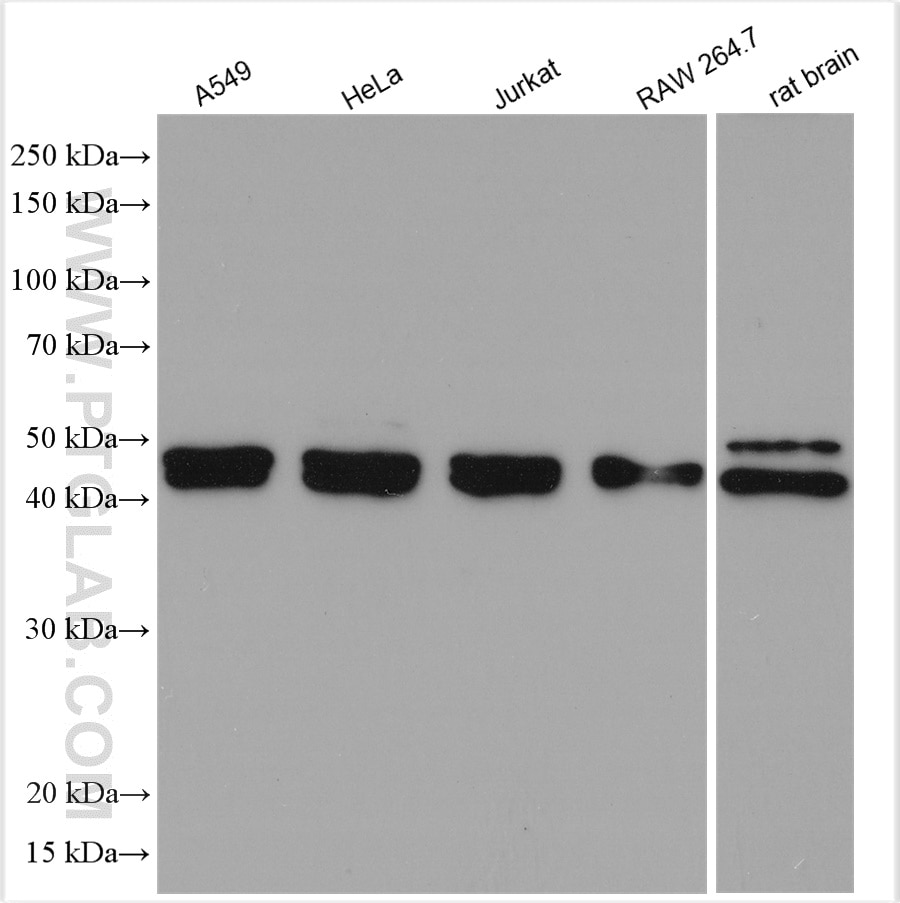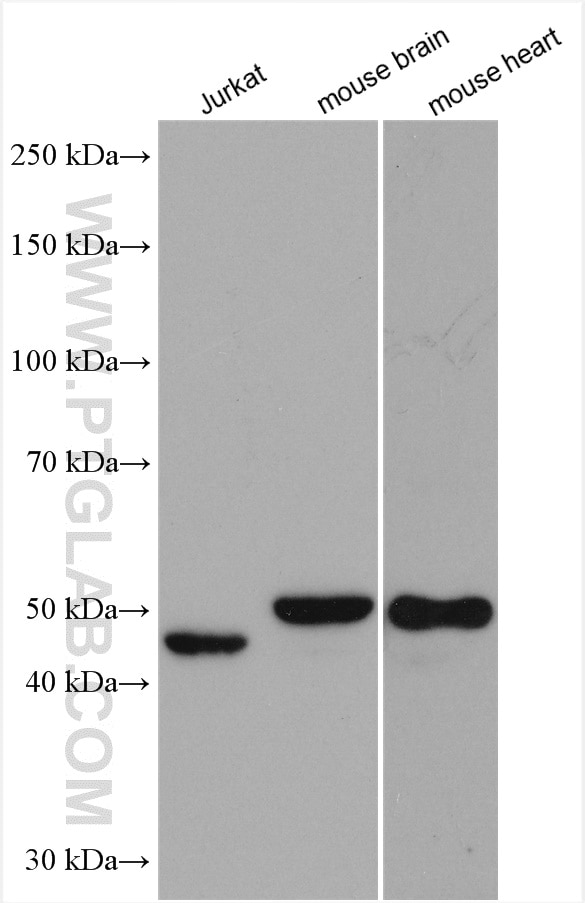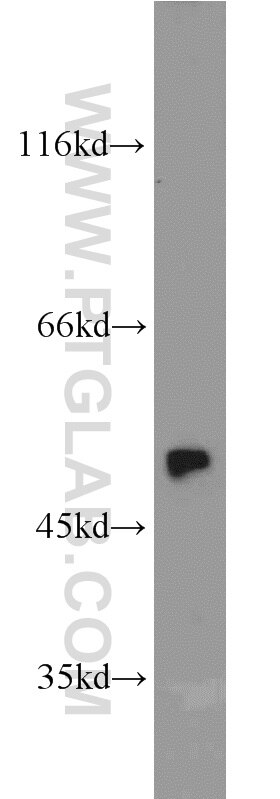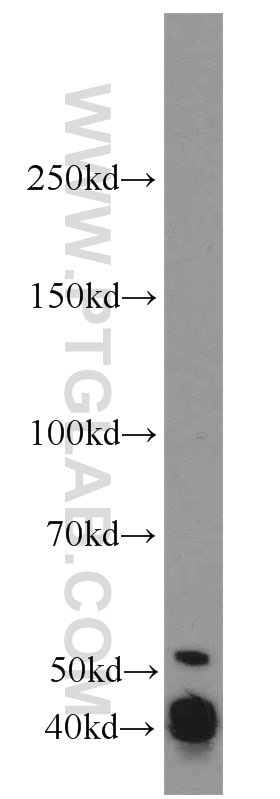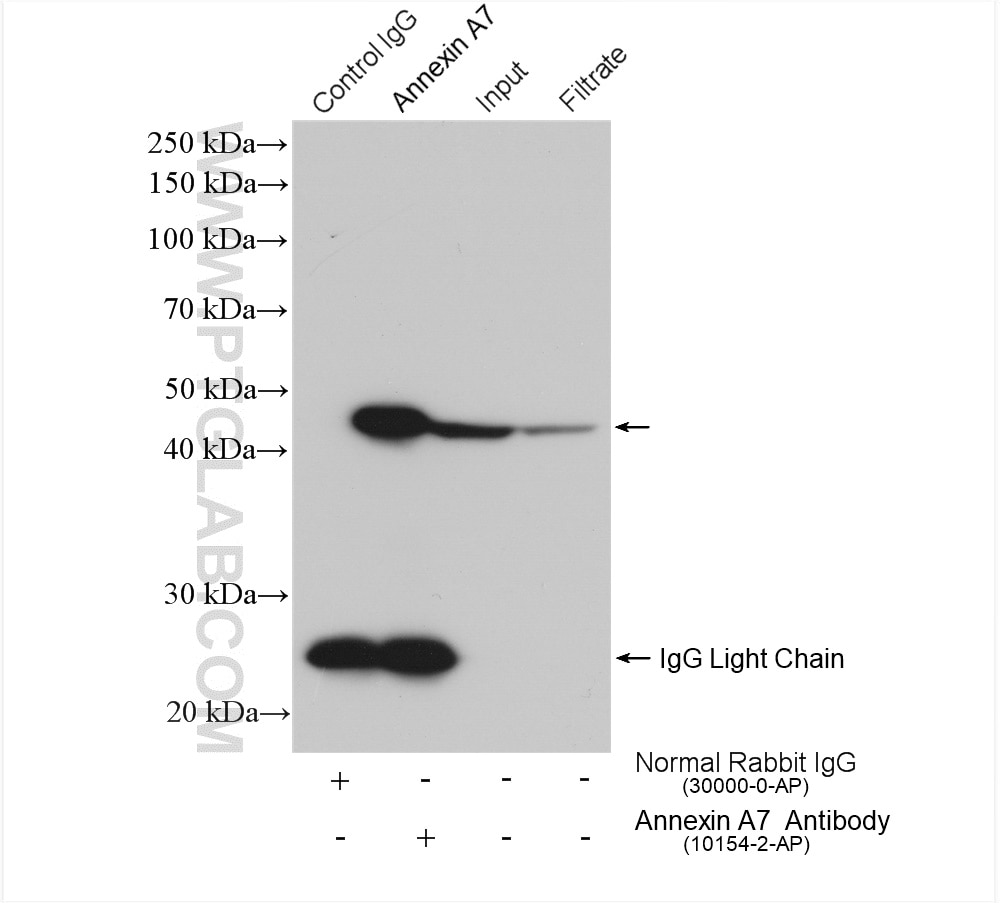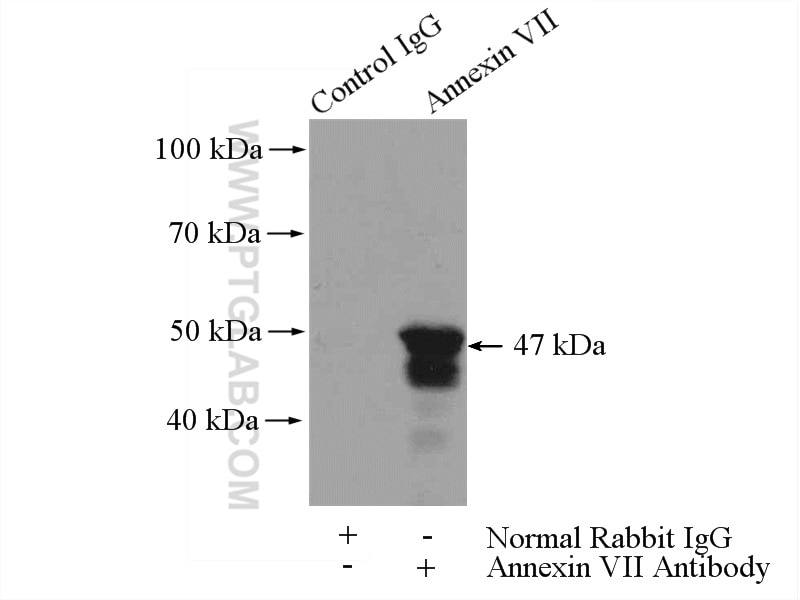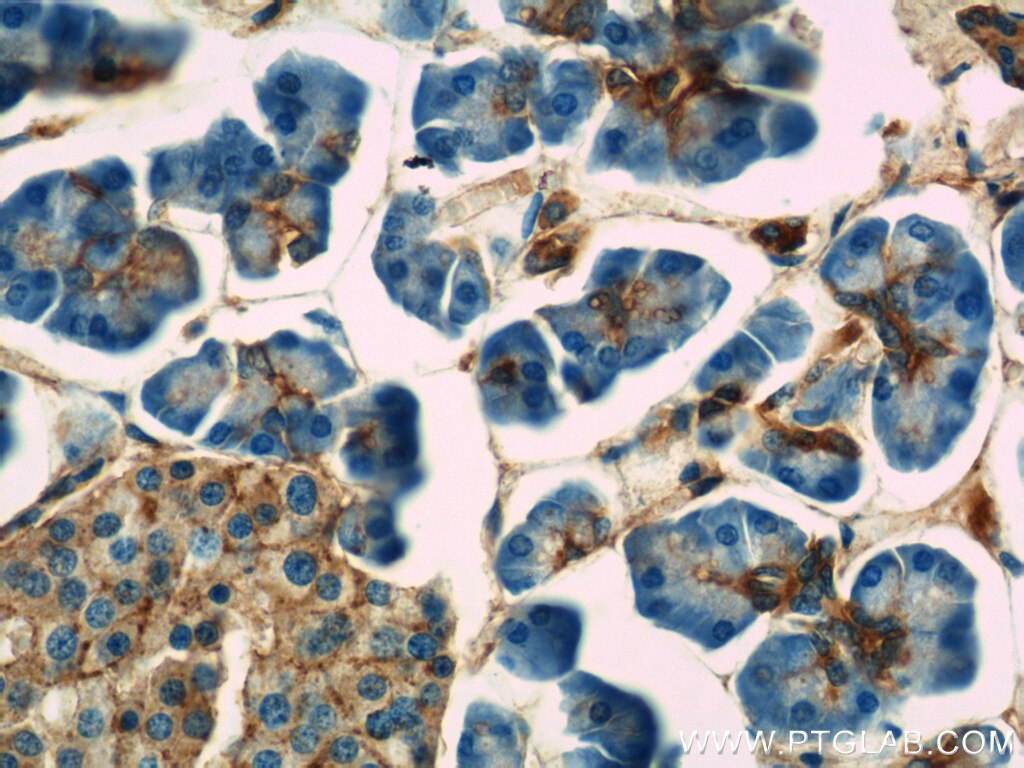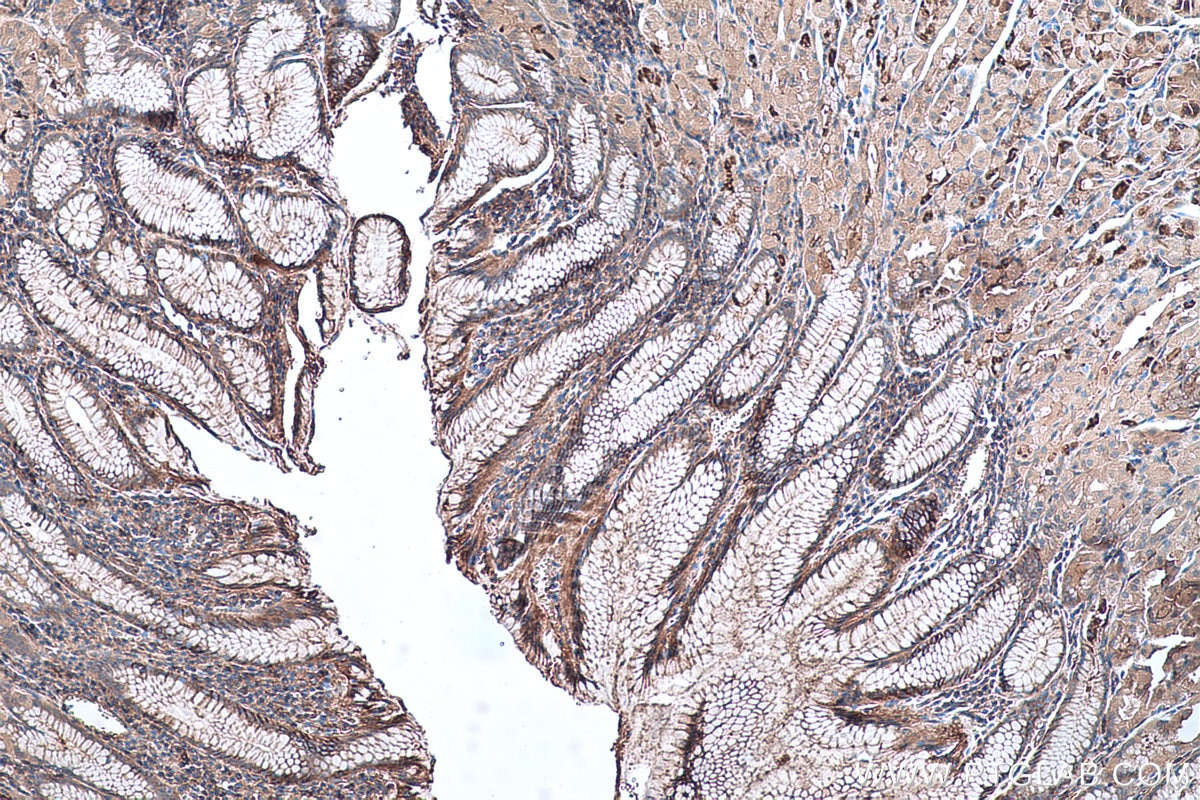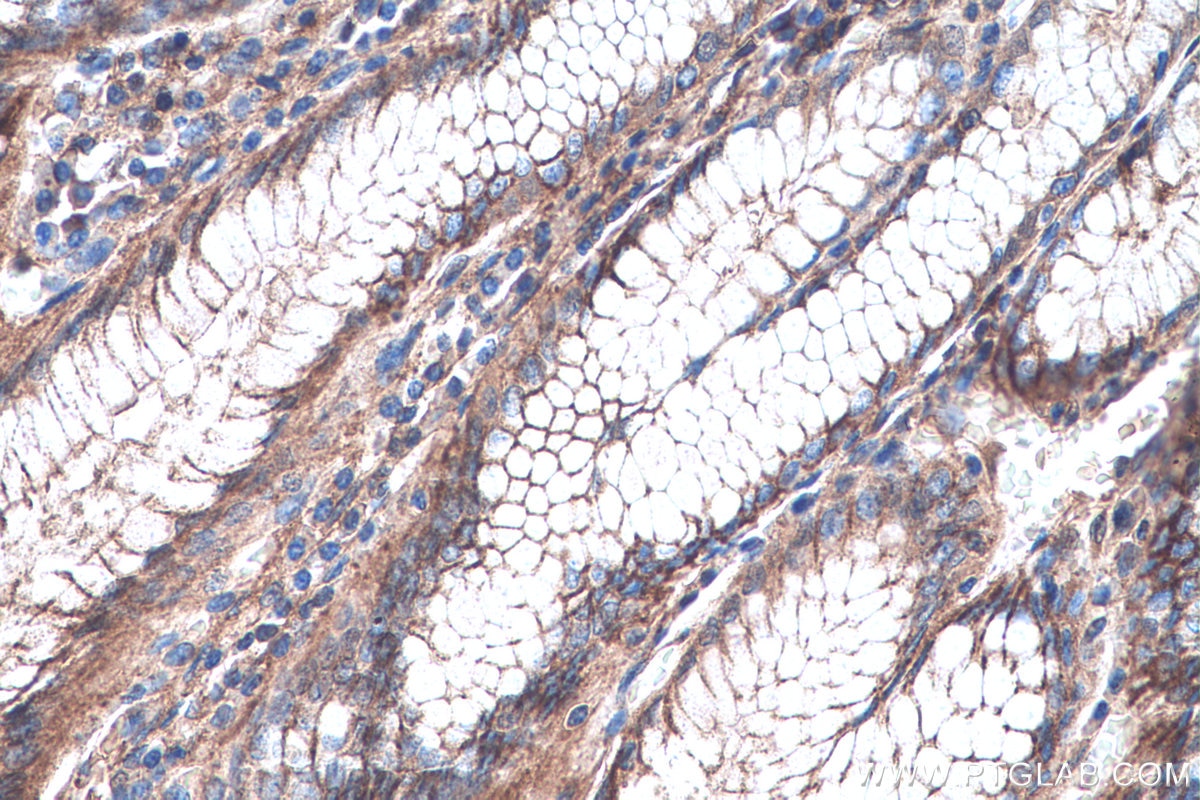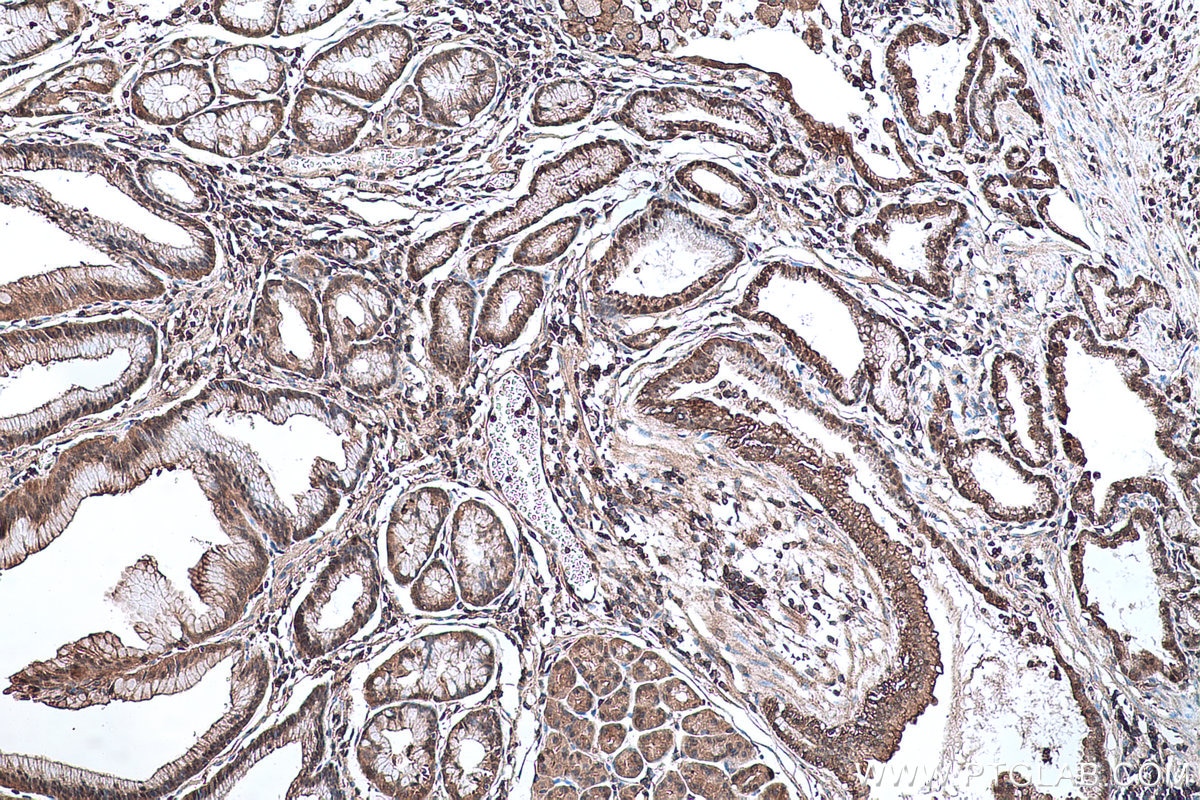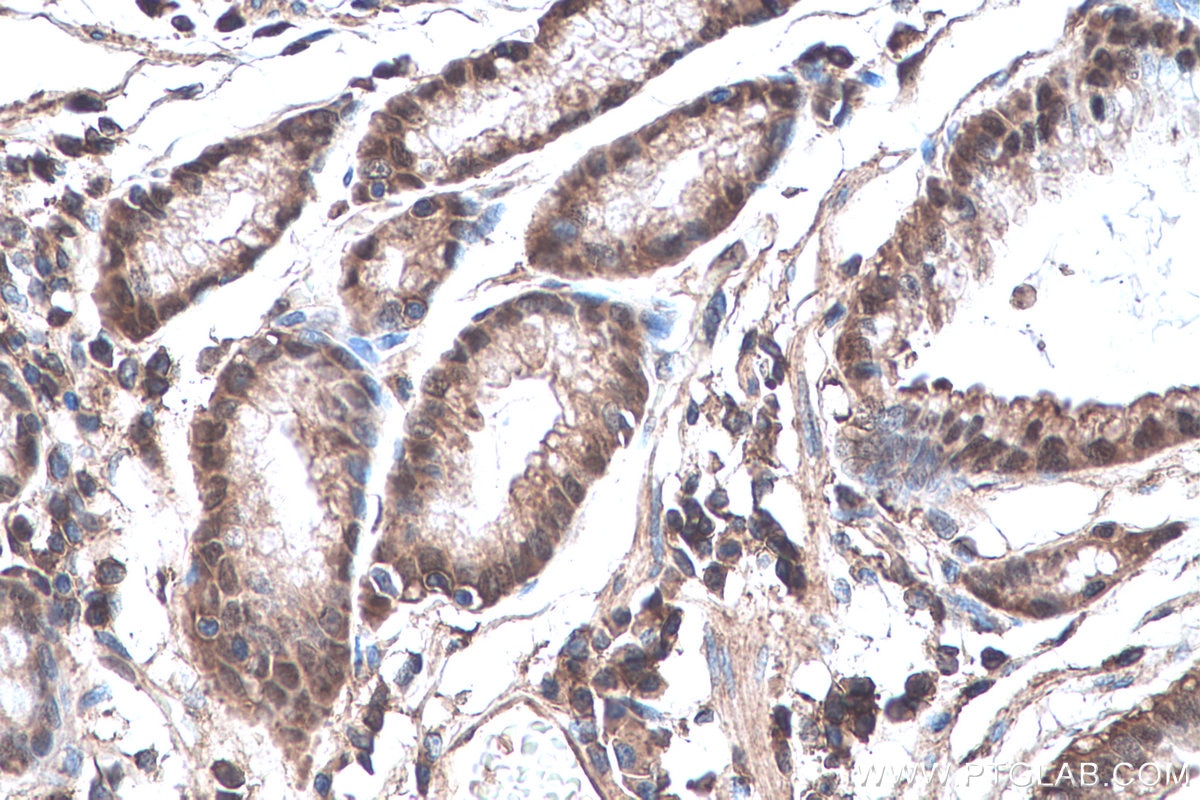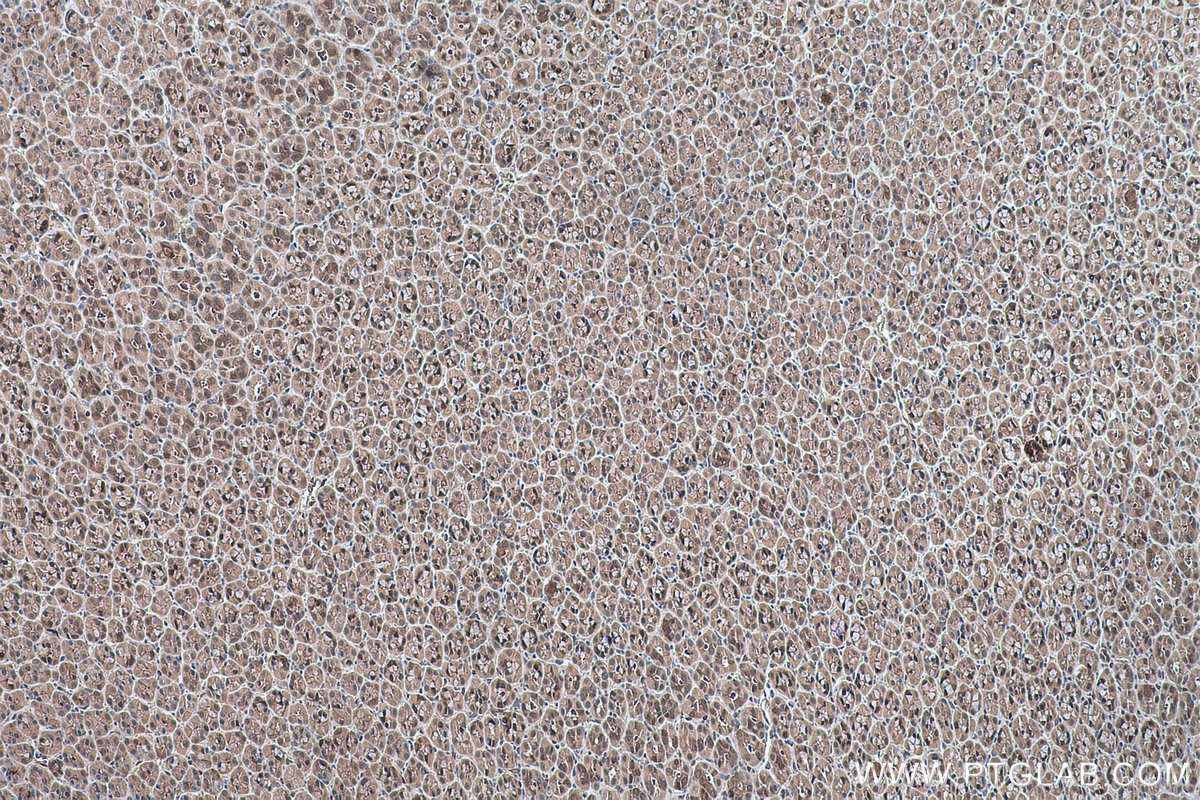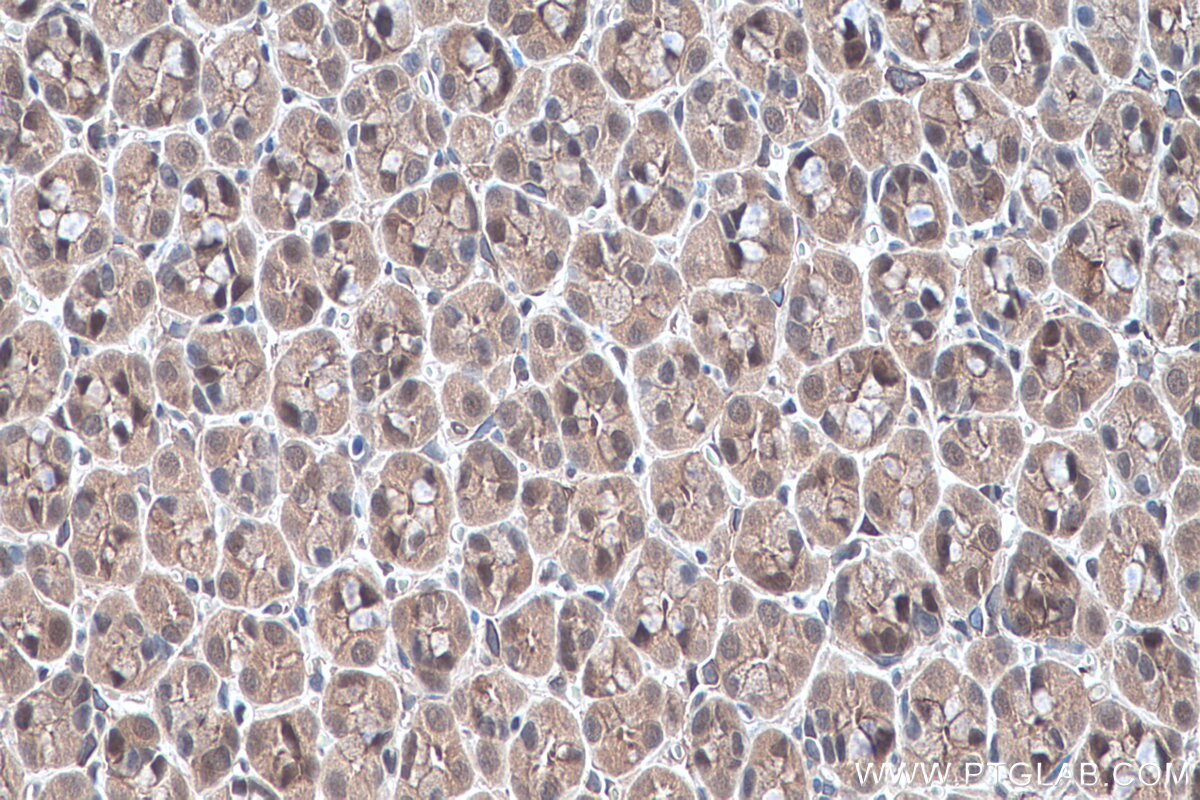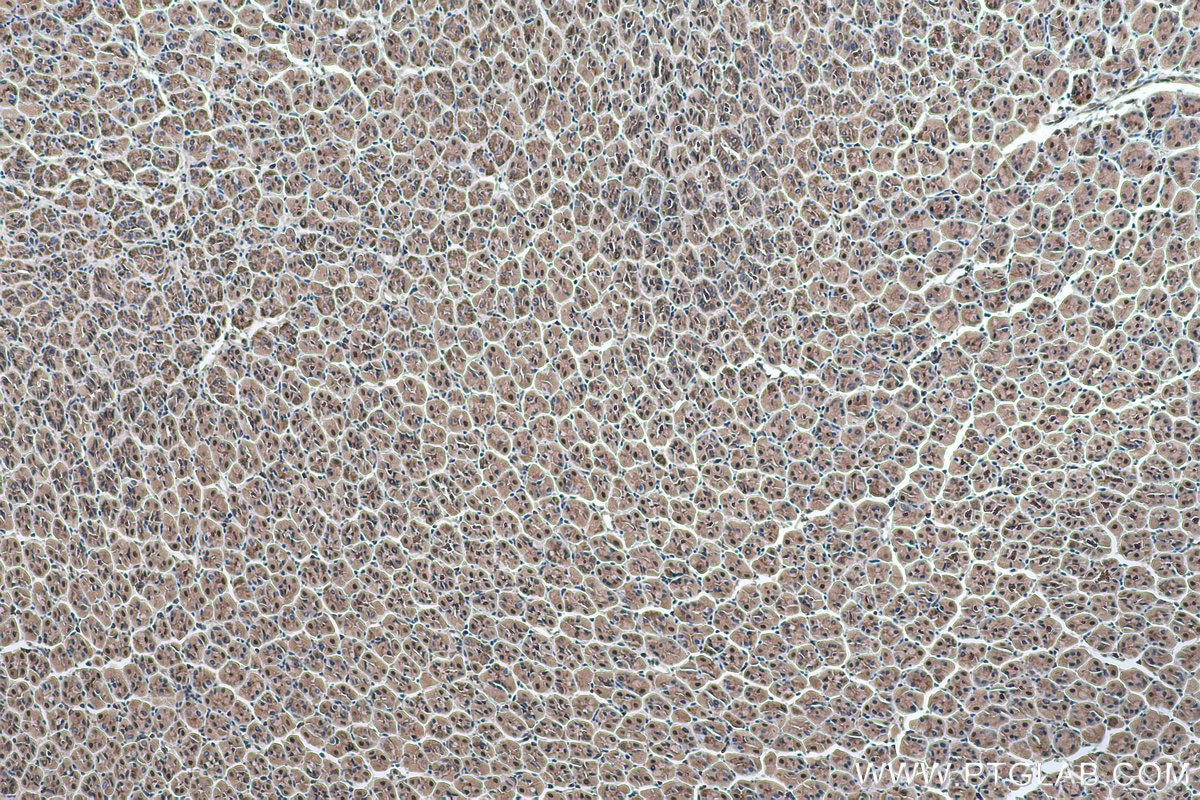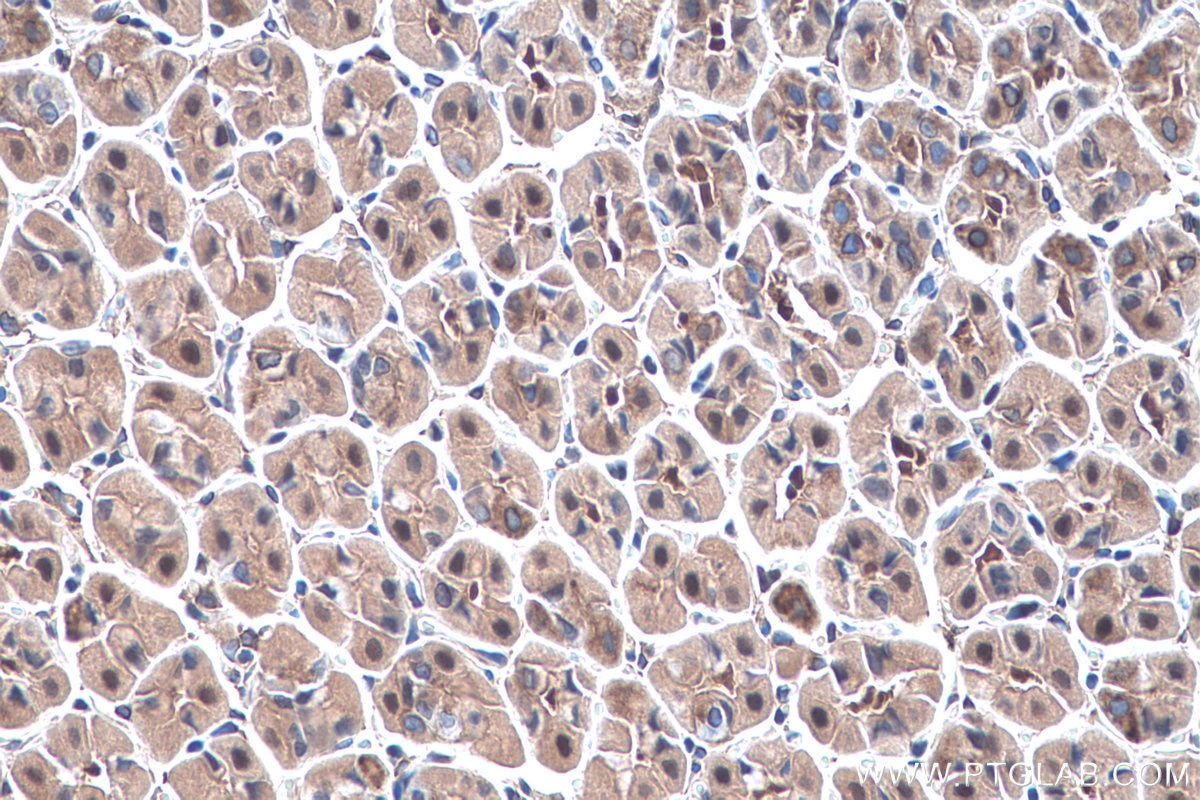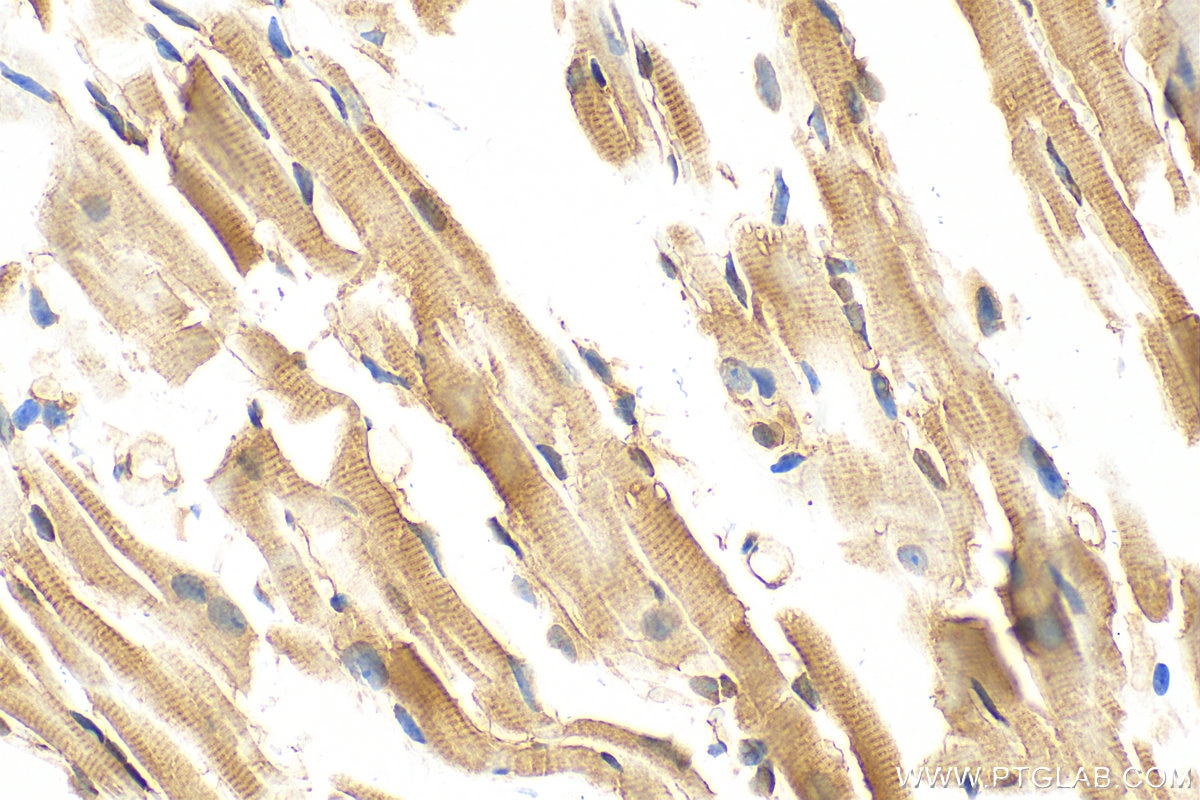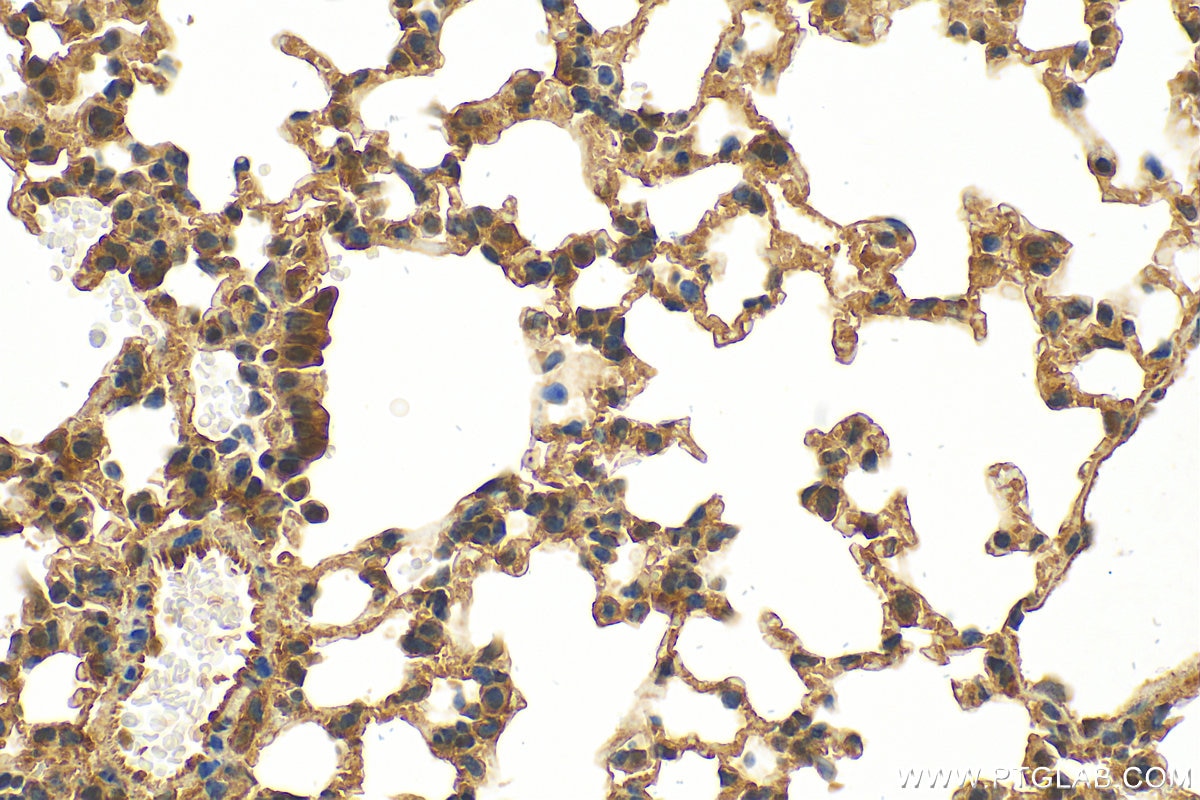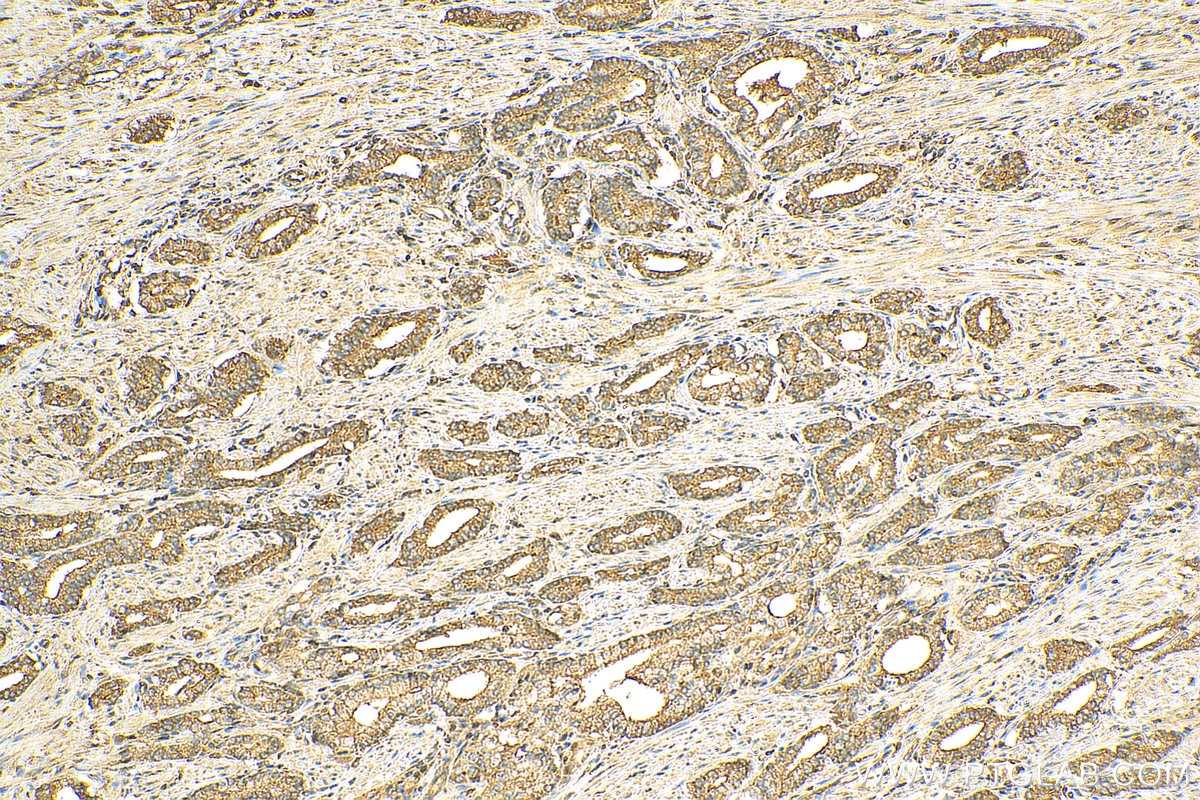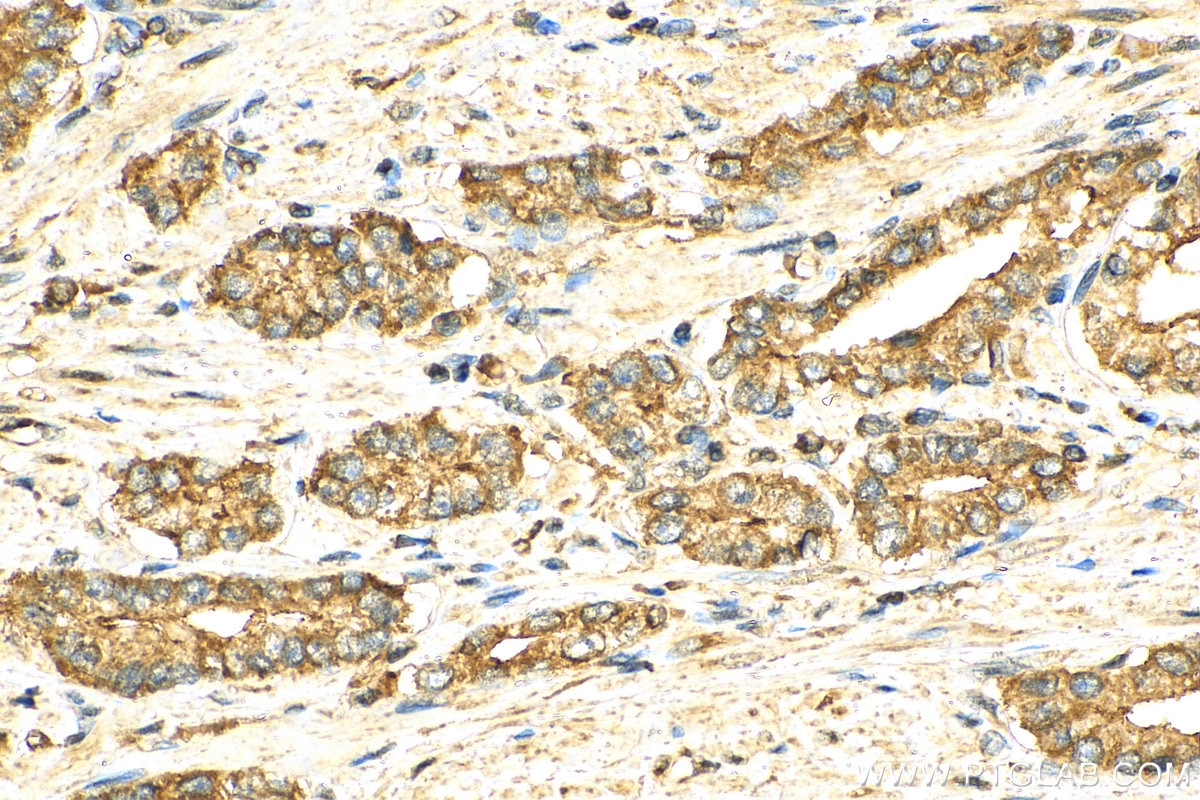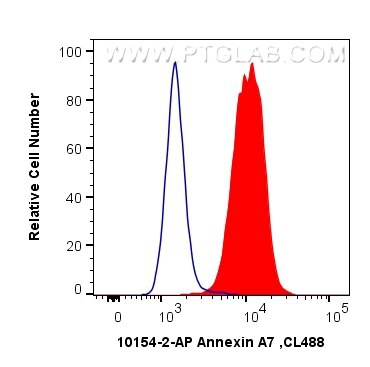- Featured Product
- KD/KO Validated
Annexin A7 Polyklonaler Antikörper
Annexin A7 Polyklonal Antikörper für WB, IHC, FC (Intra), IP, ELISA
Wirt / Isotyp
Kaninchen / IgG
Getestete Reaktivität
human, Maus, Ratte
Anwendung
WB, IHC, IF, FC (Intra), IP, ELISA
Konjugation
Unkonjugiert
Kat-Nr. : 10154-2-AP
Synonyme
Geprüfte Anwendungen
| Erfolgreiche Detektion in WB | A549-Zellen, HeLa-Zellen, Jurkat-Zellen, L02-Zellen, Maushirngewebe, Mausherzgewebe, Mauslungengewebe, Rattenhirngewebe, RAW 264.7-Zellen |
| Erfolgreiche IP | U-87 MG-Zellen, Mausherzgewebe |
| Erfolgreiche Detektion in IHC | Mausherzgewebe, humanes Pankreasgewebe, humanes Prostatakarzinomgewebe, humanes Magenkrebsgewebe, humanes Magengewebe, Maus-Magengewebe, Ratten-Magengewebe Hinweis: Antigendemaskierung mit TE-Puffer pH 9,0 empfohlen. (*) Wahlweise kann die Antigendemaskierung auch mit Citratpuffer pH 6,0 erfolgen. |
| Erfolgreiche Detektion in FC (Intra) | SH-SY5Y-Zellen |
Empfohlene Verdünnung
| Anwendung | Verdünnung |
|---|---|
| Western Blot (WB) | WB : 1:2000-1:16000 |
| Immunpräzipitation (IP) | IP : 0.5-4.0 ug for 1.0-3.0 mg of total protein lysate |
| Immunhistochemie (IHC) | IHC : 1:200-1:800 |
| Durchflusszytometrie (FC) (INTRA) | FC (INTRA) : 0.40 ug per 10^6 cells in a 100 µl suspension |
| It is recommended that this reagent should be titrated in each testing system to obtain optimal results. | |
| Sample-dependent, check data in validation data gallery | |
Veröffentlichte Anwendungen
| KD/KO | See 2 publications below |
| WB | See 10 publications below |
| IHC | See 4 publications below |
| IF | See 4 publications below |
| IP | See 1 publications below |
Produktinformation
10154-2-AP bindet in WB, IHC, IF, FC (Intra), IP, ELISA Annexin A7 und zeigt Reaktivität mit human, Maus, Ratten
| Getestete Reaktivität | human, Maus, Ratte |
| In Publikationen genannte Reaktivität | human, Maus |
| Wirt / Isotyp | Kaninchen / IgG |
| Klonalität | Polyklonal |
| Typ | Antikörper |
| Immunogen | Annexin A7 fusion protein Ag0206 |
| Vollständiger Name | annexin A7 |
| Berechnetes Molekulargewicht | 50 kDa |
| Beobachtetes Molekulargewicht | 47 kDa, 51 kDa |
| GenBank-Zugangsnummer | BC002632 |
| Gene symbol | Annexin A7 |
| Gene ID (NCBI) | 310 |
| Konjugation | Unkonjugiert |
| Form | Liquid |
| Reinigungsmethode | Antigen-Affinitätsreinigung |
| Lagerungspuffer | PBS with 0.02% sodium azide and 50% glycerol |
| Lagerungsbedingungen | Bei -20°C lagern. Nach dem Versand ein Jahr lang stabil Aliquotieren ist bei -20oC Lagerung nicht notwendig. 20ul Größen enthalten 0,1% BSA. |
Hintergrundinformationen
Annexin A7 (Anx7) belongs to a ubiquitous and relatively abundant family of Ca2+-dependent membrane-binding proteins, which are thought to be involved in multiple aspects of cell biology including membrane trafficking, mediation of cell-matrix interactions and membrane organization within cells. Anx7, migrated as a 50 kDa protein in SDS-PAGE, has been proposed to function in the fusion of vesicles, acting as a Ca++ channel and as Ca++ -activated GTPase, thus inducing Ca++ /GTP-dependent secretory events.
Protokolle
| PRODUKTSPEZIFISCHE PROTOKOLLE | |
|---|---|
| WB protocol for Annexin A7 antibody 10154-2-AP | Protokoll herunterladen |
| IHC protocol for Annexin A7 antibody 10154-2-AP | Protokoll herunterladenl |
| IP protocol for Annexin A7 antibody 10154-2-AP | Protokoll herunterladen |
| STANDARD-PROTOKOLLE | |
|---|---|
| Klicken Sie hier, um unsere Standardprotokolle anzuzeigen |
Publikationen
| Species | Application | Title |
|---|---|---|
Matrix Biol Proteome-wide and matrisome-specific atlas of the human ovary computes fertility biomarker candidates and open the way for precision oncofertility. | ||
Am J Physiol Endocrinol Metab Differential expression of the regulated catecholamine secretory pathway in different hereditary forms of pheochromocytoma. | ||
J Proteome Res Quantitative Mitochondrial Proteomics Reveals ANXA7 as a Crucial Factor in Mitophagy.
| ||
Am J Transl Res Downregulation of annexin A7 decreases proliferation, migration, and invasion of gastric cancer cells by reducing matrix metalloproteinase 1 and 9 expression. | ||
Biofactors Ezrin as a possible diagnostic and/or prognostic biomarker in mice lymphatic metastatic hepatocellular carcinoma in vivo. | ||
FEBS Lett Annexins A1 and A2 are recruited to larger lysosomal injuries independently of ESCRTs to promote repair. |
